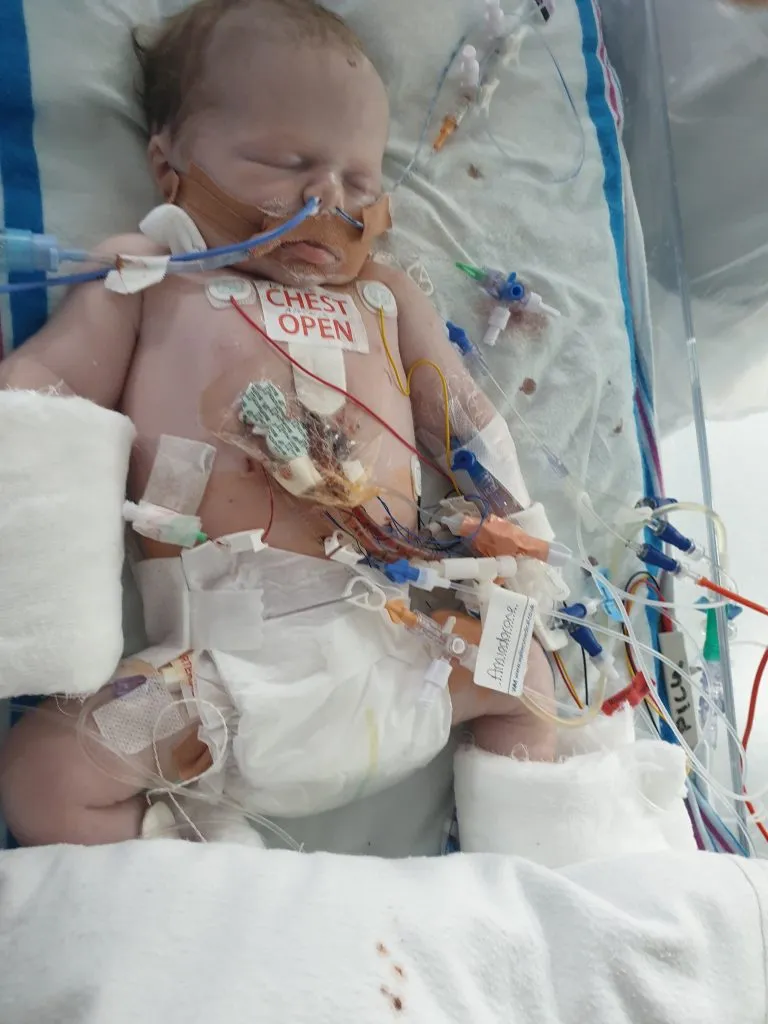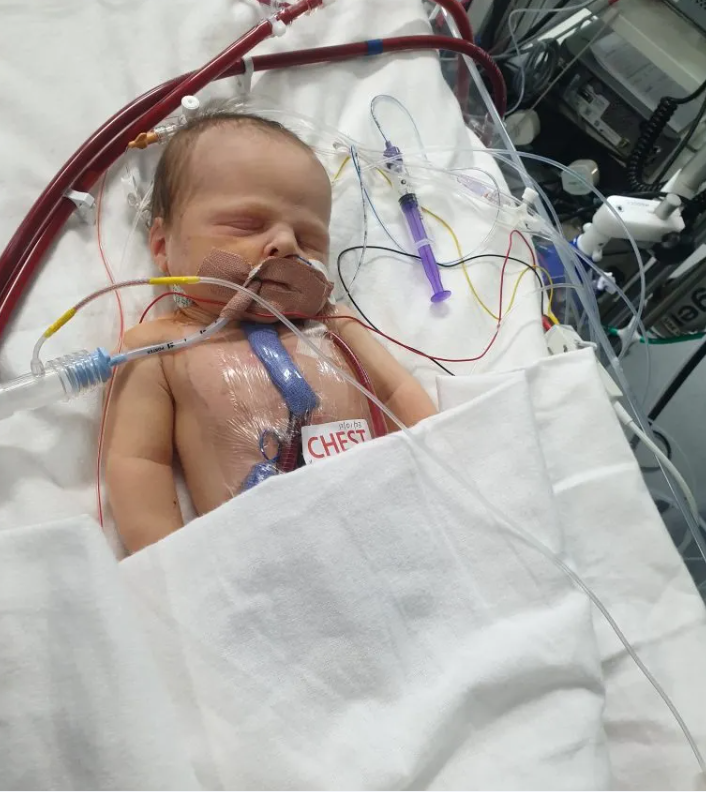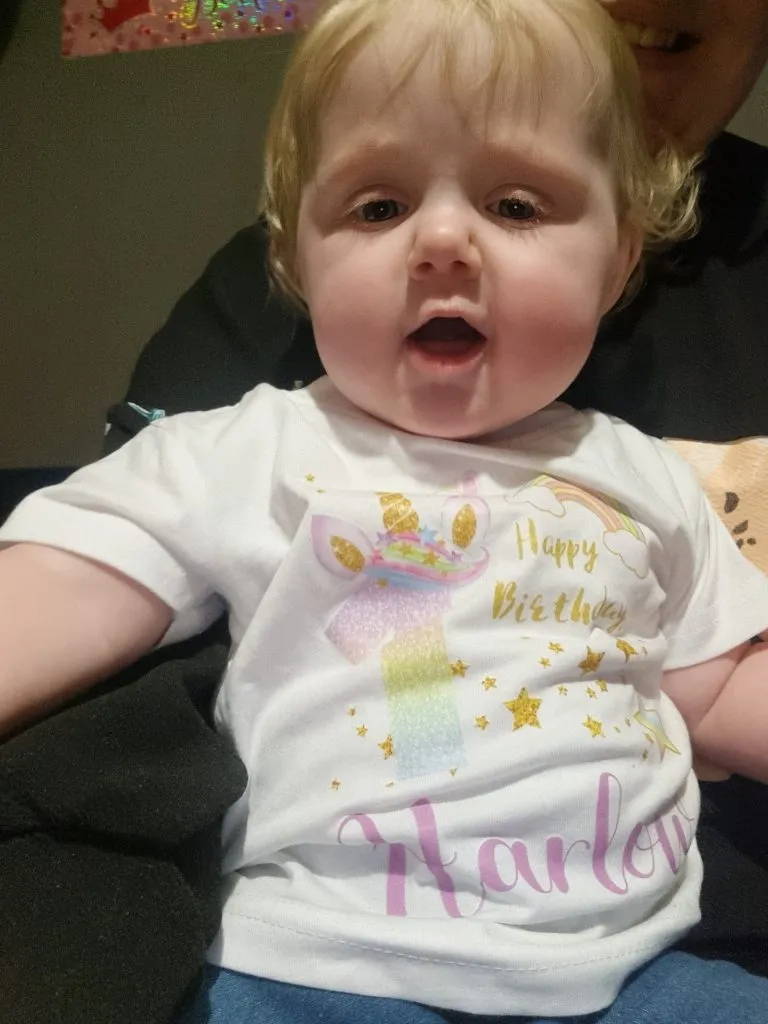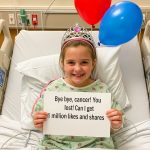Aortic Stenosis: Harlow’s Story of Courage and Hope

When you hear your baby’s heartbeat for the first time, you imagine a future full of laughter, milestones, and love — not hospital corridors, heart monitors, and surgeries.
But for Amber-Marie, that was the beginning of a journey that would test her strength and redefine what it means to have hope.
This is Harlow’s story — a story of courage, survival, and the power of family love.
(The photos in this story were taken by and belong to the author, depicting their family’s personal journey.)
The First Signs: A Mother’s Intuition
When I was pregnant with Harlow, everything seemed perfect. Each scan looked fine, and I felt reassured every time I heard her tiny heartbeat.
At 20 weeks, the sonographer paused during the routine scan. They thought they saw something unusual in her heart. I went back for another check a few days later — and was told everything looked good. I breathed a sigh of relief.
Weeks passed. My pregnancy seemed normal.
Until I reached 37 weeks.
That’s when everything changed.
A Shocking Discovery
At my 37-week growth scan, doctors noticed more fluid on one side of Harlow’s brain than the other. It sounded worrying, but what I mentioned next changed everything.
I told them I had a previous heart scan where they thought they saw something wrong.
The sonographer decided to take another quick look. After a few moments of silence, she said softly,
“Yes… we can see something.”
I returned the following week for a detailed heart examination. That’s when they gave me the diagnosis:
Aortic stenosis — a critical congenital heart defect.
The valve on the left side of her heart wasn’t opening properly.
It should open and close to let blood flow through the body, but Harlow’s valve was too narrow and stiff. Her tiny heart was struggling even before she entered the world.

Preparing for the Unknown
Just a week later, her condition worsened.
The doctors sat me down and explained that I needed to be induced early.
When Harlow was born, she would be taken straight to NICU (neonatal intensive care unit).
They would have to stabilize her and prepare for open-heart surgery within days of birth.
I remember staring at the monitor, listening to her heartbeat echo through the room, wondering how something so small could already be fighting so hard.
The Day Harlow Was Born
On January 7th, Harlow came into the world.
She was tiny, beautiful — and immediately whisked away by a team of doctors and nurses.
At just five days old, she underwent her first open-heart surgery.
The surgeons worked to open her aortic valve, giving her heart the chance to pump blood properly.
The operation was a success, but her battle was far from over.
Life on the Edge: Days in PICU
After surgery, Harlow was placed on ECMO, a life-support machine that took over the work of her heart and lungs.
For seven long days, she lay surrounded by tubes, machines, and soft beeping monitors — the rhythm of survival.
We spent nearly four weeks in the Pediatric Intensive Care Unit (PICU).
Each day felt like a year. Every tiny movement — a flutter of her eyelids, a squeeze of my finger — felt like a miracle.
I learned that courage doesn’t always roar.
Sometimes, it’s a baby’s heartbeat that keeps fighting when no one expects it to.

Another Setback, Another Fight
Just before Harlow turned two months old, she was transferred to another hospital for further care.
Her dad and I began nasogastric tube (NG tube) training, learning how to feed her safely. But during that time, Harlow caught parainfluenza, a viral infection.
Her oxygen levels dropped.
She was rushed back to PICU and placed on a ventilator once again.
Watching her tiny chest rise and fall with the help of a machine broke me in ways words can’t describe. But even then, Harlow refused to give up.
The Keyhole Miracle
After recovering from the infection, Harlow underwent keyhole (catheter-based) surgery to reopen her aortic valve.
This time, the procedure went smoothly. Within ten days, she was strong enough to come home — after over nine weeks in the hospital.
Doctors originally said it could take six months before she’d be ready to leave.
But Harlow proved them wrong.
Her name means “army hill,” and she lived up to it — strong, determined, and fearless.
Coming Home: A New Beginning
Bringing Harlow home felt surreal.
No more machines, no constant alarms — just silence, peace, and the sound of her soft breathing.
We still had to be cautious. Her medications, her feeding, her follow-ups — everything was carefully planned. But for the first time, we could hold her without fear.
Each smile felt like sunshine after a long storm.
Every laugh reminded us how precious life truly is.

A Thriving Toddler
Today, Harlow is a thriving one-year-old — full of energy, curiosity, and joy.
She loves music, giggles constantly, and has a mischievous sparkle in her eyes.
Her doctors are amazed at her progress.
Soon, she’ll return for the Ross-Konno procedure — a complex surgery where her right heart valve will replace the damaged left one, and a donor valve will be placed on the right.
It’s a big operation, but doctors believe it will give her many healthy years ahead before she needs another intervention.
A Mother’s Reflection
Looking back, I still feel the same rush of fear and hope that carried us through those early months.
“Nothing prepares you for hearing your baby needs open-heart surgery,”
Amber-Marie says.
“But you find strength you didn’t know existed. You learn to celebrate every heartbeat.”
She adds,
“Harlow’s story isn’t just about illness. It’s about survival, resilience, and the love that kept her alive.”
Harlow’s scar — a faint line down her chest — is not a mark of weakness.
It’s a badge of courage, a reminder of how far she’s come.
The Power of Hope
Every child born with a congenital heart defect faces unique challenges.
But stories like Harlow’s remind us that hope and modern medicine can work miracles.
Her journey through aortic stenosis, open-heart surgery, and months in intensive care is a powerful symbol of what the human heart — both literally and figuratively — can endure.
Today, Harlow’s heart beats strong, filled with the rhythm of life and love.
And her family continues to share her story to raise awareness for other parents walking the same uncertain road.











